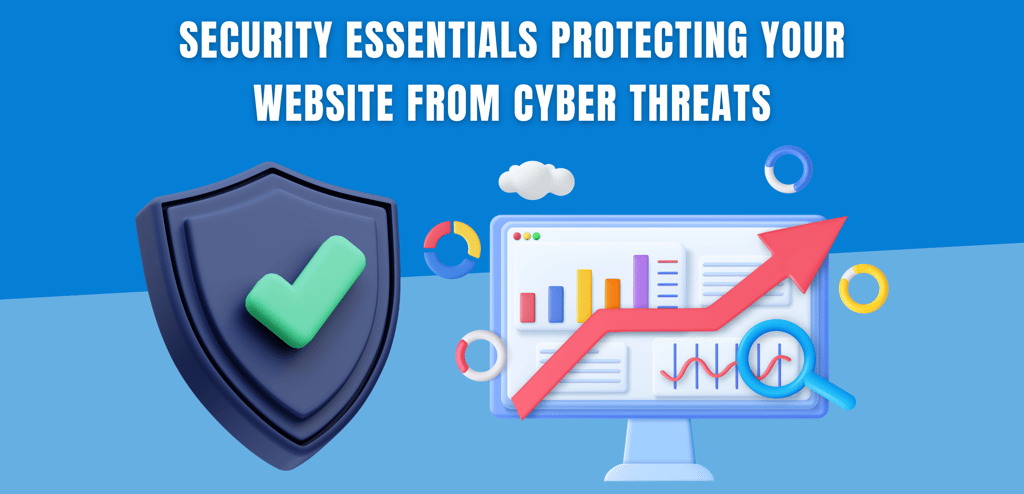
Security Essentials Protecting Your Website from Cyber Threats
By AZ Konnect Team
7/31/20243 min read


In today’s digital landscape, website security is more critical than ever. With the increasing sophistication of cyber threats, protecting your website from potential attacks is essential to safeguarding your business, customers, and data. Here’s a comprehensive guide to the security essentials you need to protect your website from cyber threats.
Understanding Common Cyber Threats
Malware
Definition: Malicious software designed to disrupt, damage, or gain unauthorized access to computer systems.
Examples: Viruses, worms, ransomware, and spyware.
Phishing
Definition: A method used by cybercriminals to trick individuals into providing sensitive information by posing as a trustworthy entity.
Examples: Fake emails, websites, or messages that appear legitimate.
DDoS Attacks
Definition: Distributed Denial of Service (DDoS) attacks overwhelm a website with traffic, making it inaccessible to users.
Impact: Causes website downtime, affecting user experience and business operations.
SQL Injection
Definition: A code injection technique used to exploit vulnerabilities in a website’s database.
Impact: Allows attackers to access, modify, or delete data.
Cross-Site Scripting (XSS)
Definition: An attack that injects malicious scripts into web pages viewed by other users.
Impact: Can hijack user sessions, deface websites, and redirect users to malicious sites.
Essential Security Measures
Keep Software Up to Date
Importance: Regularly updating your website’s software, including the content management system (CMS), plugins, and themes, is crucial to protect against known vulnerabilities.
Action: Enable automatic updates where possible and routinely check for new updates.
Use Strong Passwords
Importance: Strong passwords reduce the risk of unauthorized access.
Action: Use complex passwords with a combination of letters, numbers, and special characters. Encourage users to do the same.
Implement SSL Certificates
Importance: Secure Sockets Layer (SSL) certificates encrypt data transmitted between the user’s browser and your website, protecting sensitive information.
Action: Ensure your website uses HTTPS instead of HTTP.
Regular Backups
Importance: Regular backups ensure that you can restore your website quickly in case of a security breach.
Action: Schedule automatic backups and store them in a secure, off-site location.
Web Application Firewalls (WAF)
Importance: WAFs filter and monitor HTTP traffic between a web application and the Internet.
Action: Implement a WAF to block malicious traffic and protect against various attacks.
Monitor and Scan for Vulnerabilities
Importance: Regular scanning can identify potential vulnerabilities before they can be exploited.
Action: Use security tools and services to perform regular scans and audits of your website.
Limit User Access
Importance: Restricting user permissions minimizes the risk of unauthorized actions.
Action: Assign user roles based on necessity, ensuring that users only have access to the features they need.
Educate Employees and Users
Importance: Human error is a common cause of security breaches.
Action: Provide training on security best practices and awareness of phishing and other common threats.
Implement Two-Factor Authentication (2FA)
Importance: 2FA adds an extra layer of security by requiring a second form of verification in addition to a password.
Action: Enable 2FA for all user accounts.
Secure File Uploads
Importance: Unsecured file uploads can allow malicious files to be uploaded to your server.
Action: Implement security measures like file type verification, virus scanning, and limiting file sizes.
Advanced Security Practices
Content Security Policy (CSP)
Importance: CSP helps prevent XSS attacks by specifying which content sources are trusted.
Action: Define and implement a CSP for your website.
Intrusion Detection Systems (IDS)
Importance: IDS monitor network traffic for suspicious activity and potential threats.
Action: Implement an IDS to detect and respond to potential intrusions.
Security Headers
Importance: Security headers protect your website from various types of attacks.
Action: Implement headers like X-Frame-Options, X-XSS-Protection, and Content-Security-Policy.
Regular Security Audits
Importance: Regular audits help identify and address security weaknesses.
Action: Conduct periodic security audits with the help of security professionals.
Conclusion
Protecting your website from cyber threats is a continuous process that requires vigilance and proactive measures. By understanding common cyber threats and implementing essential security practices, you can significantly reduce the risk of attacks and ensure the safety of your website, business, and customers. Stay informed about the latest security trends and technologies to keep your website secure in an ever-evolving digital landscape.
Subscribe To Our Newsletter


